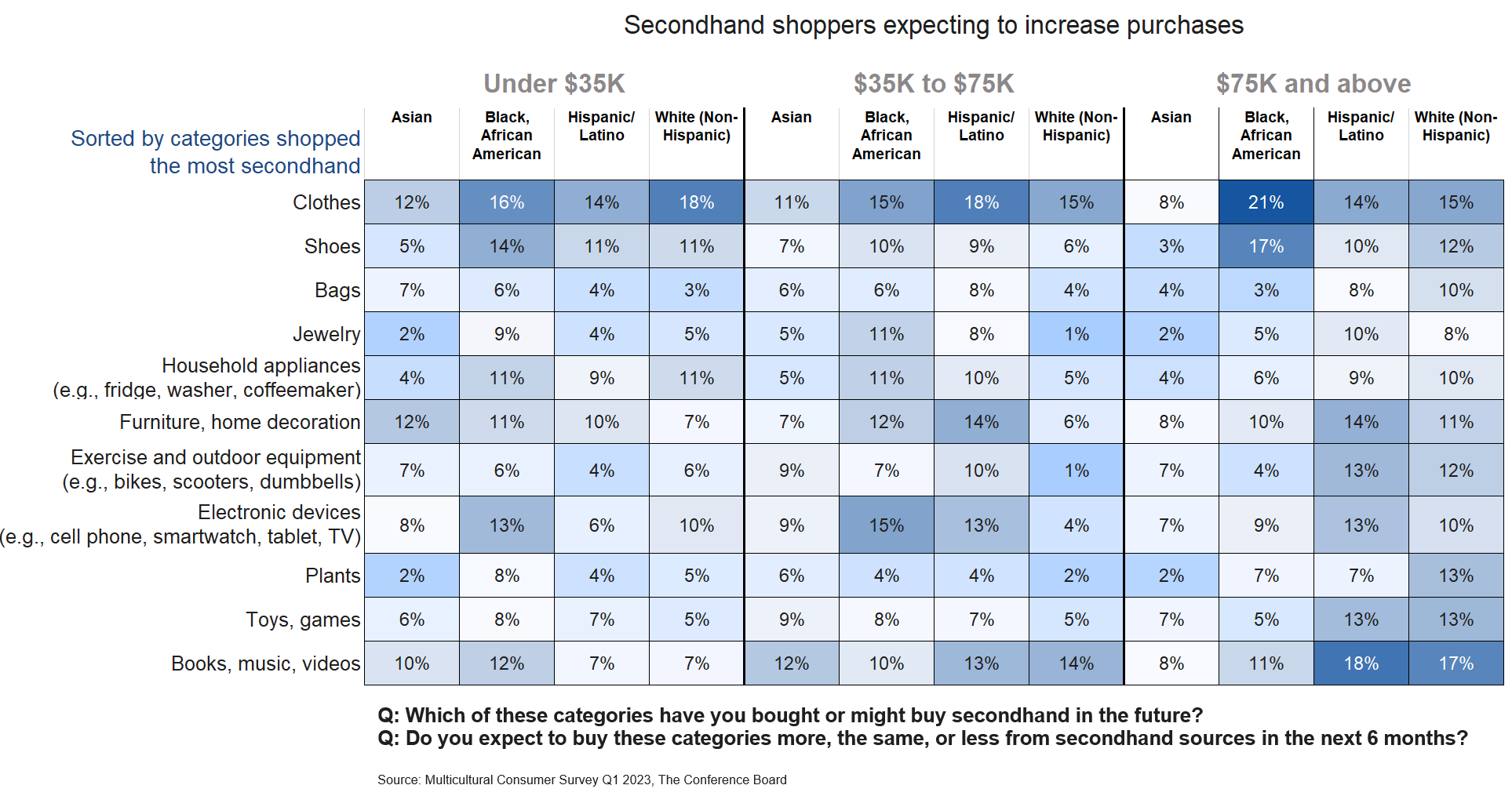The Growing Popularity Of Secondhand Goods

Table of Contents
Environmental Benefits of Choosing Secondhand Goods
The environmental impact of fast fashion and rampant consumerism is undeniable. Buying secondhand goods offers a powerful antidote to this problem, contributing significantly to a more sustainable future. By choosing pre-owned items, we actively reduce textile waste and lessen the demand for new production, thereby lowering our carbon footprint. This is crucial in mitigating the environmental damage caused by the manufacturing processes involved in creating new products, including:
-
Reduced landfill waste: Millions of tons of clothing and other goods end up in landfills each year. Buying secondhand diverts these items from landfills, reducing pollution and conserving valuable land resources.
-
Lower carbon emissions from manufacturing: The production of new goods is energy-intensive and contributes significantly to greenhouse gas emissions. Buying used goods drastically reduces this carbon footprint.
-
Conservation of natural resources (water, energy, raw materials): Manufacturing new products requires vast quantities of water, energy, and raw materials. Choosing secondhand reduces this demand, helping conserve precious natural resources.
-
Promotion of sustainable consumption patterns: Buying secondhand promotes a shift towards a more sustainable consumption model, encouraging mindful purchasing and reducing our overall environmental impact. This aligns perfectly with the principles of the circular economy, where products are reused, repaired, and repurposed, reducing waste and resource depletion. This eco-friendly shopping approach is becoming increasingly important as consumers actively seek sustainable fashion and eco-conscious choices.
Economic Advantages of the Secondhand Market
Beyond the environmental benefits, the secondhand market offers compelling economic advantages. Buying pre-owned items allows consumers to access high-quality goods at significantly lower prices. This is particularly appealing in times of economic uncertainty and rising inflation. The cost savings are substantial:
-
Access to designer brands at lower costs: Secondhand shops and online marketplaces often offer luxury and designer brands at a fraction of their retail price, making them accessible to a wider range of consumers.
-
Budget-friendly alternatives to new products: For many items, secondhand options provide a budget-friendly alternative to buying new, allowing consumers to save money without compromising on quality.
-
Finding unique and vintage items: The secondhand market offers a unique opportunity to find one-of-a-kind items and vintage treasures that cannot be found in mainstream stores.
-
Saving money for other expenses: The money saved by buying secondhand can be used for other expenses, contributing to improved financial well-being. This affordable shopping strategy is increasingly attractive to budget-conscious consumers.
The Rise of Online Secondhand Platforms and Marketplaces
The accessibility of secondhand goods has been dramatically enhanced by the proliferation of online secondhand platforms and marketplaces. These digital marketplaces have made accessing and purchasing pre-owned items incredibly convenient, connecting buyers and sellers worldwide. Popular examples include eBay, Poshmark, ThredUp, and Depop. These online resale platforms offer:
-
Increased accessibility and convenience: Online platforms provide 24/7 access to a vast selection of secondhand goods, eliminating the need to visit physical stores.
-
Wider selection of products compared to traditional thrift stores: Online marketplaces offer a significantly larger selection of items than traditional brick-and-mortar thrift stores, often featuring items from various locations.
-
Easier to search and compare items: Online platforms provide advanced search and filtering options, making it easy to find specific items and compare prices.
-
Global reach: Online secondhand marketplaces connect buyers and sellers across the globe, expanding access to a wider variety of goods and unique items.
The Social Impact of the Secondhand Market
The secondhand market extends beyond individual benefits. It fosters a sense of community and promotes social responsibility by supporting small businesses and independent sellers. This aspect of ethical consumption is vital for creating a more equitable economy:
-
Support small businesses and independent sellers: Many secondhand shops and online sellers are small businesses, and by purchasing from them, you directly support their livelihood and contribute to the local economy.
-
Increased social interaction and community engagement through online platforms and local markets: Online platforms and local markets can create communities around shared interests and sustainable practices.
-
Promoting a more equitable and inclusive consumption model: The secondhand market offers access to goods for those with lower incomes, promoting a more equitable and inclusive consumption model.
Overcoming Concerns and Finding Quality Secondhand Goods
Concerns about the quality and authenticity of secondhand items are understandable. However, with a little care and attention, it is easy to find high-quality used goods at great prices. Here are some tips:
-
Thoroughly inspect items before purchasing: Always examine items carefully for any damage or defects before committing to a purchase.
-
Research sellers' reputations and reviews: Check seller ratings and reviews to assess their reliability and trustworthiness, particularly on online platforms.
-
Understand return policies: Familiarize yourself with the return policies to protect yourself in case you receive a damaged or unsatisfactory item.
-
Learn how to clean and care for secondhand goods: Proper cleaning and care can extend the lifespan of secondhand items, maximizing your investment. Authenticating secondhand items, especially luxury goods, can require some knowledge or professional help.
Conclusion
The growing popularity of secondhand goods offers a multitude of advantages. From reducing our environmental impact and saving money to supporting local businesses and finding unique treasures, choosing pre-owned items is a win-win-win. The convenience of online resale platforms has further democratized access to these sustainable and affordable options. Embrace the growing popularity of secondhand goods and start exploring the many benefits of sustainable and affordable shopping today! Discover unique treasures and contribute to a more circular economy by choosing pre-owned items. Join the secondhand revolution!

Featured Posts
-
 Demi Moores Yellowstone Esque Drama Returning For A Second Season
May 13, 2025
Demi Moores Yellowstone Esque Drama Returning For A Second Season
May 13, 2025 -
 When And Where To Watch Eva Longoria Searching For Spain
May 13, 2025
When And Where To Watch Eva Longoria Searching For Spain
May 13, 2025 -
 Trumps Sotu Address Met With Local Resident Protests
May 13, 2025
Trumps Sotu Address Met With Local Resident Protests
May 13, 2025 -
 Mlb 2 1 6
May 13, 2025
Mlb 2 1 6
May 13, 2025 -
 Vstrecha Kostyuk I Kasatkinoy Znak Primireniya Ili Politicheskiy Zhest
May 13, 2025
Vstrecha Kostyuk I Kasatkinoy Znak Primireniya Ili Politicheskiy Zhest
May 13, 2025
